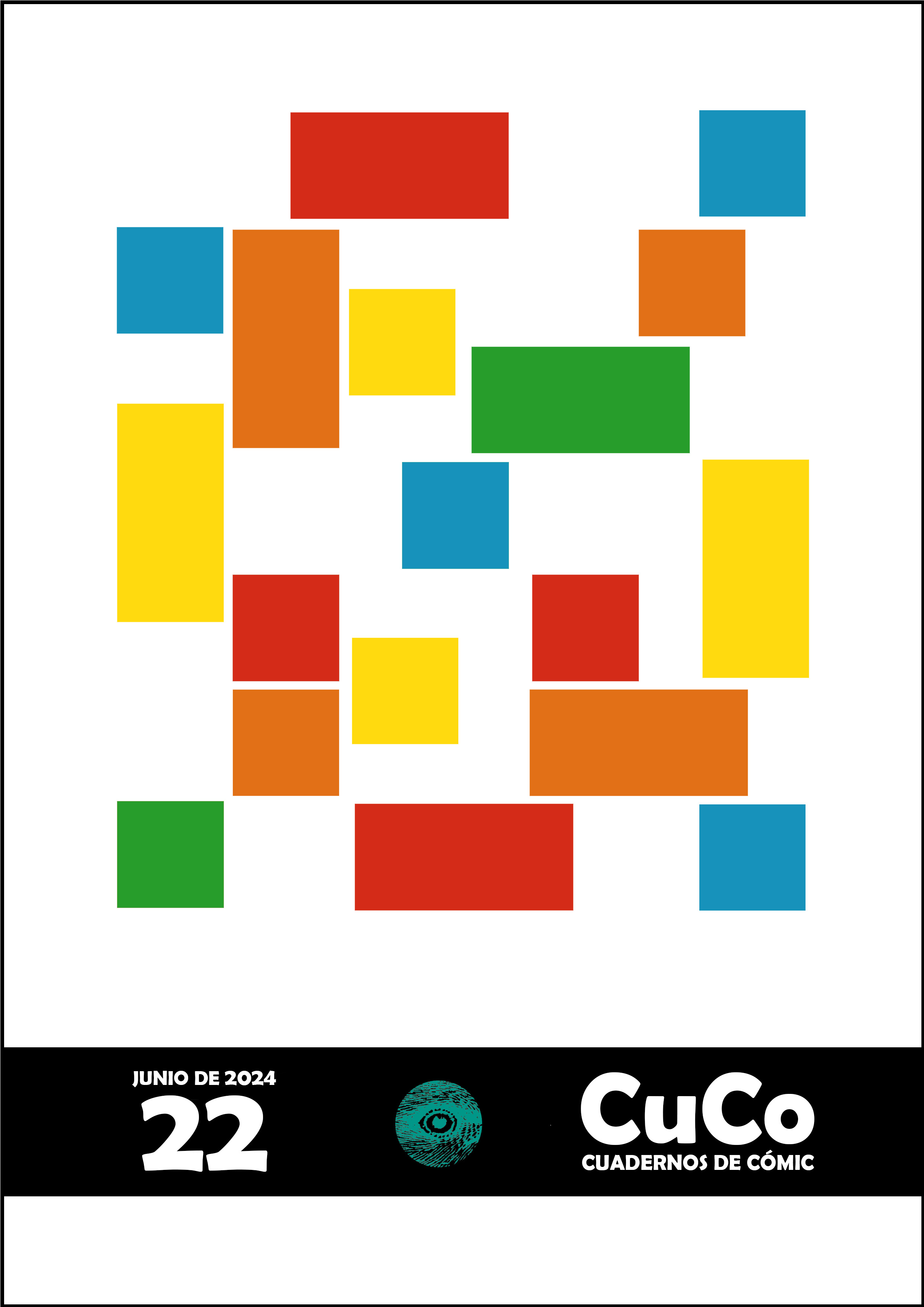The Secret to Superhuman Strength by Alison Bechdel and the Concept of Interdependence
Published 2024-07-08
Keywords
- Alison Bechdel,
- interdependence,
- feminism,
- gender,
- transcendentalism
How to Cite
Copyright (c) 2024 Mara González de Ozaeta

This work is licensed under a Creative Commons Attribution-ShareAlike 4.0 International License.
Abstract
This essay delves into the idea of interdependence, its origin, and the role it plays in the biographical comic book The Secret to Superhuman Strength (2021) by Alison Bechdel. According to the artist, this term not only unites Hinduism, Buddhism, escapist literature, transcendentalism, and counterculture, but also helps the author to put together all those personal milestones that ended up composing her own identity as an artist. By doing so, she might want to unveil the hidden truth that she strived so hard to conquer. However, this comic is about that quest and how similar is hers to that of preceding female authors who finally could not reach it. Amongst whom we can count, Margaret Fuller, Dorothy Coleridge, Betty Friedan, Judith Butler, Virginia Woolf; etc.
With her panels, Bechdel vindicates the real importance and the obstacles before reaching the already mentioned interdependence for women artists, activists, explorers, etc., throughout her lifetime and, likewise, during the different feminist waves in the U.S. Concurrently, she is seeking to find that which brings her the superhuman strength. The way she assumes that in sake of self-determinism she must rage against many restrictions imposed on women living in our western society. Bechdel uses some of those sources to highlight the role of the first intellectuals, their disagreements, and the ongoing values during her chronology. For this, intertextuality, or the dialogue between various texts in Bechdel’s, plays another central role to set women in the Emersonian ideal despite he had other plans for us.
Downloads
References
- BECHDEL, Alison. El Secreto de la Fuerza Sobrehumana, Barcelona, Reservoir Books, 2021.
- _. Fun Home. Una familia tragicómica, Barcelona, Reservoir Books, 2006.
- _. «Alison Bechdel Seeks Self-Understanding Through Exercise» en GOLDSMITH, S. Colombus Monthly [entrevista] 28/09/2021 Disponible en: https://eu.columbusmonthly.com/story/lifestyle/features/2021/09/28/alison-bechdel-author-fun-home-seeks-superhuman-strength/5909680001/
- BIRKE, L. I. A. Feminism and the biological body. New Brunswich, NJ: Rutgers University Press, 1999.
- BLOOM, H. La ansiedad de la influencia. Una teoría de la poesía. Madrid: Trotta, 2009.
- BUTLER, J. El Género en Disputa Barcelona: Paidos Iberica, 2007.
- _. Notes Toward a Performative Theory of Assembly. Massachusetts: Harvard University Press, 2015.
- _. Lenguaje y Poder, Madrid: Síntesis, 2004.
- COLERIDGE, S.T. The Complete Poetical Works of Samuel Taylor Coleridge. Vol. 1 and 2. [ebook] Gutenberg.org, 2009.
- DUNNE, Maryjane «The Representation of Women in Comic Books, Post WWII Through the Radical 60’s» PSU McNair Scholars Online Journal: Vol. 2: Iss. 1, 2006.
- EMERSON, R. W. Woman. A Lecture Read Before the Woman's Rights Convention, September 20, 1855, en SACKS, K. S. (ed.) Political Writings. Cambridge: Cambridge University Press, 2008.
- https://archive.vcu.edu/english/engweb/transcendentalism/authors/emerson/essays/woman.html
- FREUD, S. Introducción al Narcisismo y Otros Ensayos, Madrid: Alianza Editorial, 2005.
- FRIEDMAN, B. La Mística de la Feminidad, Madrid: Cátedra, 2009.
- FULLER, M. “Women in the Nineteenth Century”: The Complete Works of Margaret Fuller. E-book ed. Praha, Czech Republic: Madison & Adams Press, 2018.
- GILBERT, S. M. The Madwoman in the Attic: The woman writer and the nineteenth century imagination. New Haven and London: Yale University Press, 2000.
- GOUGEON, L. «Emerson and the Women Question: the Evolution of His Thought» en The New England Quarterly, vol. 71, no. 4, pp. 570–92. JSTOR, https://doi.org/10.2307/366603, 1998.
- GROSZ, E. Volatile Bodies: Toward a Corporeal Feminism. Bloomington: Indiana University Press, 1994.
- HUMBERSTONE, B. «Re-creation and connections in and with nature: Synthesizing Ecological and Feminist Discourses and Praxis?» en International Review for the Sociology of Sport, 33(4), 381–392. https://doi.org/10.1177/101269098033004005, 1998.
- PAREL, A. J. (2008). Gandhi and the Emergence of the Modern Indian Political Canon. The Review of Politics, 70(1), 40–63. http://www.jstor.org/stable/20452956
- POPOVA, M. «The Secret to Superhuman Strength: Alison Bechdel’s Illustrated Meditation on the Life of the Body, the Death of the Self, and Our Search for Meaning» en The Marginalian 01/01/2022.
- PRECIADO, P. B. Dysphoria Mundi, Barcelona: Anagrama, 2020.
- QUINAN, C. Doing gender in media, art and culture: A comprehensive guide to gender studies, edited by Rosemarie Buikema, et al., Routledge, 2017.
- WATSON, J. «Autographic disclosures and genealogies of desire in Alison Bechdel’s “Fun Home.” » Biography, 31(1), 27–58, 2008. http://www.jstor.org/stable/23540920
- ZWARG, C. “Introduction: Fuller, Emerson, and the Task of Reading”, Feminist conversations: Fuller, Emerson, and the play of reading, Cornell University Press, 1995, p. 1 http://www.jstor.org/stable/10.7591/j.ctv1nhmpq.5. Accessed 16 Mar. 2023

